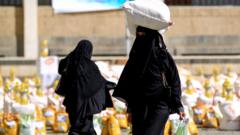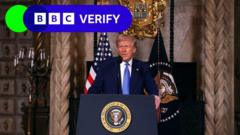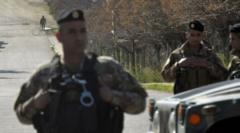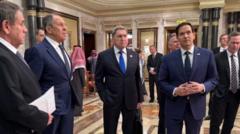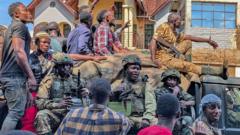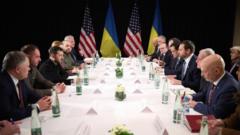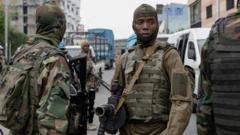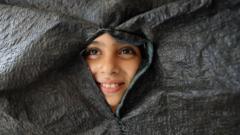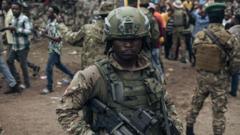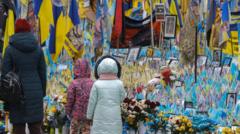The conflict in the DRC, particularly in its mineral-rich eastern regions, dates back over three decades, influenced by the aftermath of the 1994 Rwandan genocide. The M23 rebel group has recently intensified its offensives, seizing key cities, including Goma and Bukavu, leading to severe humanitarian repercussions. Their resurgence underscores long-standing ethnic tensions and the influence of Rwanda, which has been accused of backing the rebels for strategic gains.
**Escalating Violence in the Democratic Republic of Congo and its Historical Roots**
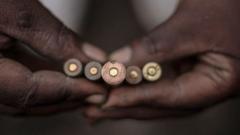
**Escalating Violence in the Democratic Republic of Congo and its Historical Roots**
The ongoing conflict in the Democratic Republic of Congo (DRC) is deeply intertwined with historical, ethnic, and economic factors, resulting in a humanitarian crisis as rival armed groups fight for control.
As the M23 pursues control amid accusations of historical grievances and exploitation of Congo's mineral wealth, regional tensions escalate, further complicating international peacekeeping efforts and regional diplomacy.
In the complex landscape of the DRC, the roots of conflict reach deep into history, prompting questions about sovereignty, international involvement, and the fight for resources.
The eastern regions of the Democratic Republic of Congo have been engulfed in conflict for over 30 years, greatly influenced by the fallout from the Rwandan genocide in 1994. This prolonged instability has led to various armed groups contesting control against the central government, driven by access to the nation's abundant mineral wealth and ethnic rivalries. Recently, fighters from the M23 rebel group have escalated their activities, capturing significant cities including Goma, prompting warnings from UN agencies about a looming humanitarian disaster.
The M23, primarily led by Tutsi ethnic members, claims to act in self-defense against threats to their community, citing unfulfilled agreements made to protect Tutsis in the region. While the group previously faced defeat at the hands of the Congolese army and international forces, it has resurfaced to challenge authority once again, raising concerns about its ties to Rwanda. The Rwandan government has historically been accused of supporting the M23, although it denies these claims, arguing instead that it aims to prevent spillover of violence into its territory.
The link between the ongoing violence and the region's mineral resources cannot be overstated. Reports indicate that the M23 is exploiting these resources, notably coltan, which is essential for the electronics industry, leading to accusations of looting by Rwanda taking advantage of the chaos. Despite regional peace efforts, tensions remain high, exemplified by armed confrontations involving national forces from South Africa and other neighboring countries.
As the situation in the DRC remains dire, the complexities of ethnic strife, historical grievances, and geopolitical interests continue to exacerbate the humanitarian crises, leaving the future of the region uncertain. The role of international peacekeepers has also come into question, with many Congolese citizens expressing dissatisfaction over their effectiveness in quelling violence.
In the complex landscape of the DRC, the roots of conflict reach deep into history, prompting questions about sovereignty, international involvement, and the fight for resources.
The eastern regions of the Democratic Republic of Congo have been engulfed in conflict for over 30 years, greatly influenced by the fallout from the Rwandan genocide in 1994. This prolonged instability has led to various armed groups contesting control against the central government, driven by access to the nation's abundant mineral wealth and ethnic rivalries. Recently, fighters from the M23 rebel group have escalated their activities, capturing significant cities including Goma, prompting warnings from UN agencies about a looming humanitarian disaster.
The M23, primarily led by Tutsi ethnic members, claims to act in self-defense against threats to their community, citing unfulfilled agreements made to protect Tutsis in the region. While the group previously faced defeat at the hands of the Congolese army and international forces, it has resurfaced to challenge authority once again, raising concerns about its ties to Rwanda. The Rwandan government has historically been accused of supporting the M23, although it denies these claims, arguing instead that it aims to prevent spillover of violence into its territory.
The link between the ongoing violence and the region's mineral resources cannot be overstated. Reports indicate that the M23 is exploiting these resources, notably coltan, which is essential for the electronics industry, leading to accusations of looting by Rwanda taking advantage of the chaos. Despite regional peace efforts, tensions remain high, exemplified by armed confrontations involving national forces from South Africa and other neighboring countries.
As the situation in the DRC remains dire, the complexities of ethnic strife, historical grievances, and geopolitical interests continue to exacerbate the humanitarian crises, leaving the future of the region uncertain. The role of international peacekeepers has also come into question, with many Congolese citizens expressing dissatisfaction over their effectiveness in quelling violence.

